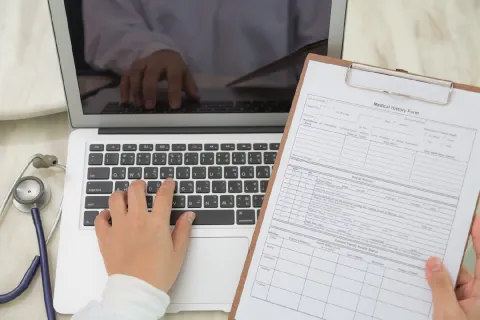
During the COVID-19 pandemic, Real-World Data (RWD) and Real-World Evidence (RWE) were essential sources of information for the United States Food and Drug Administration (USFDA) to expedite the approvals of COVID-19 vaccines and therapeutics and to allow other clinical studies to progress under the changing circumstances. For post-approval studies currently, the FDA ensures the appropriate RWD is utilized to create RWE. Such verification ensures good quality, adequate coverage, and suitable simulation of the data gathered in legitimate clinical trials. Potentially, RWD has far more variability and a significant likelihood of data gaps.
RWD/RWE Identification in Regulatory Submissions
The FDA issued guidance for such submissions applicable to New Drug Application (NDA), Investigational New Drug Application (INDA), and Biologics License Application (BLA) comprising RWD/RWE information for the evaluation of a product’s safety and efficacy. To better understand the terms, the FDA defines RWD and RWE as follows:
- RWD captures the information associated with patient health status and/or the delivery of healthcare gathered from potential sources on a routine basis.
- RWE, produced from an RWD analysis, is scientific evidence concerning a pharmaceutical product’s use and potential benefits. Diverse research designs, including, but not limited to, interventional studies (clinical trials) or non-interventional (observational studies), can be used to produce RWE from RWD.
Validating the data is critical for efficiently utilizing RWD and RWE, regardless of the data’s source.
Roadblocks to Avoid with RWE for Regulatory Submissions
1. Negligence to Share a Predefined Protocol and Systems, Applications, & Products (SAP) in Data Processing
The USFDA emphasizes maintaining transparency to avoid risks recognized in its RWE framework, which can be done promptly and cost-effectively in electronic data sets. Such an approach increases the possibility of conducting multiple retrospective studies to ensure desired results attainment.
2. Lack of Data
Incomplete EHR data can hinder efforts to establish similarity with an active study cohort by making it challenging to assess baseline characteristics for prospective cohorts. Multiple attempts to use RWE studies to support the approval of oncology products have failed due to this issue. In many situations, the sponsor was unable to offer thorough documentation on crucial baseline parameters such as prior treatment plans, tumor stage, and Eastern Cooperative Oncology Group (ECOG) scores. The FDA reviewers observed that missing data, such as the date of diagnosis or the commencement of initial treatment, can bring bias into the investigation in support of the investigational product and that the inability to report examination regimens created confounding bias.
3. Disqualification of Patients Leading to a Small Cohort
It is challenging for a sponsor to utilize RWE for Regulatory purposes when the Electronic Health Record (EHR) data is incomplete. Sponsors often have to exclude patients with incomplete datasets from analyses to achieve comparability with active trial cohorts, thus reducing a data set that may already be small.
Given the potential of diversity in population characteristics, clinical practices, and coding across data sources, the FDA recommends demonstrating whether and how data from various sources can be obtained and integrated with the acceptable quality for studies that require combining data from multiple data sources or study sites.
4. Inability to Capture Uniform Data
The complexity of consistently obtaining clinical outcomes in an EHR or claims data is a barrier to the acceptability of RWE research for Regulatory purposes. Recently, the FDA highlighted the measurable impact that discrepancies in physician practice, particularly in diagnoses and coding, have on reporting clinical outcomes. To mitigate these risks, the FDA encourages sponsors to use RWD sources to record outcomes with more objective and well-defined diagnostic criteria, such as mortality, stroke, or myocardial infarction.
Conclusion
The efficient and comprehensive use of RWE enables successful Regulatory submissions by focusing on knowledge-sharing of cases. Such initiatives can help optimize and integrate already-existing RWE regulations or encourage the development of frameworks in nations lacking such policies. Once the RWE frameworks are accessible, efforts must be made to ensure maximum RWD accessibility, use, standardization, and systematic review-precision to develop a culture that supports high-quality RWE and improve the use of RWE for Regulatory decision-making.
Additional guidelines on the planning and execution of novel clinical trials, such as pragmatic trials, prospective randomized registry studies, and other hybrid studies should encourage the greater use of novel methods for drug development. A proven Regulatory expert can help describe the proposed protocols and analyze strategies with clear explanations during data accumulation, customization, and modification. Such assistance will ascertain the consistency, validity, and conciseness of the data sources and methodologies used. Consult Freyr, an industry leader in Publishing & Submissions, for end-to-end RWD-RWE submission protocols and strategies.









